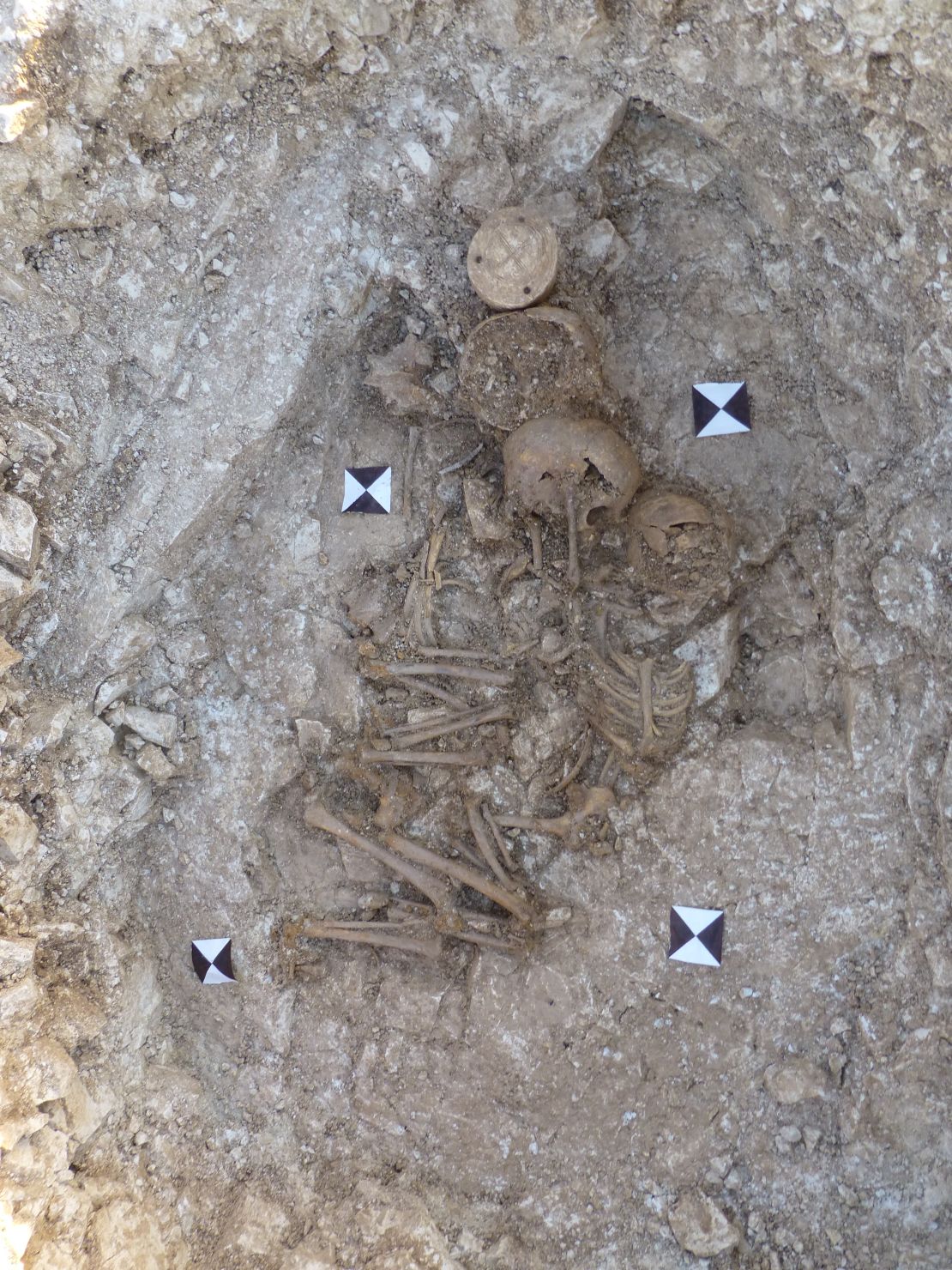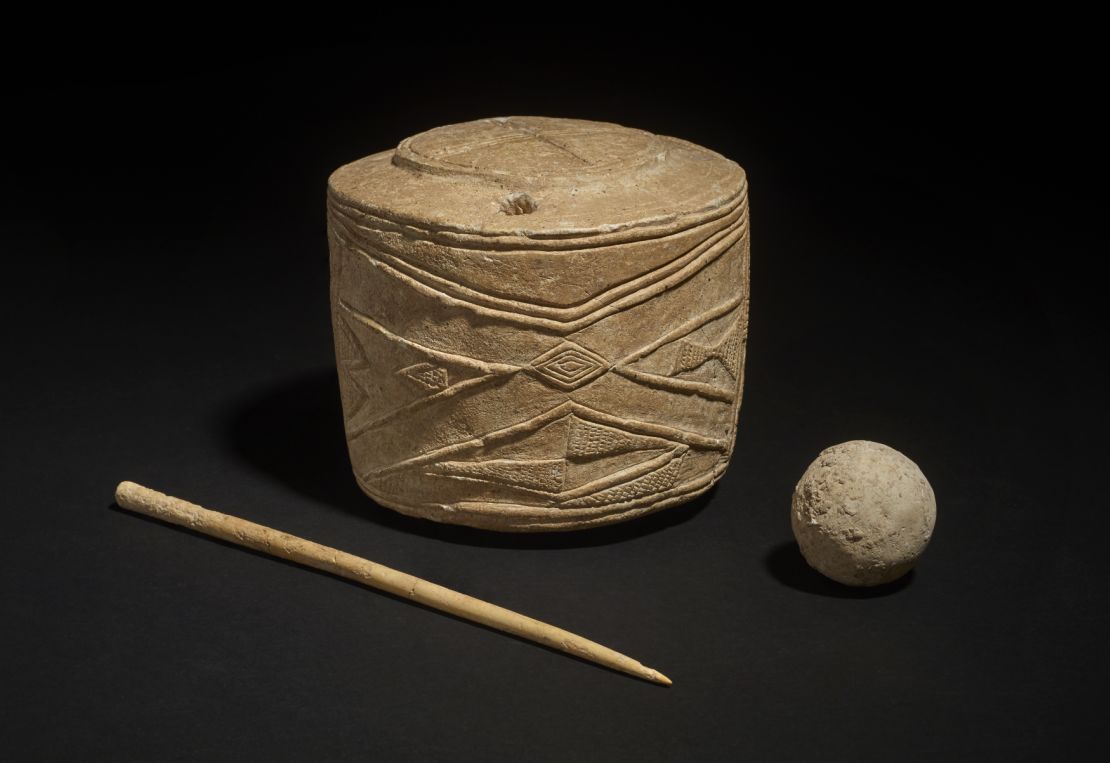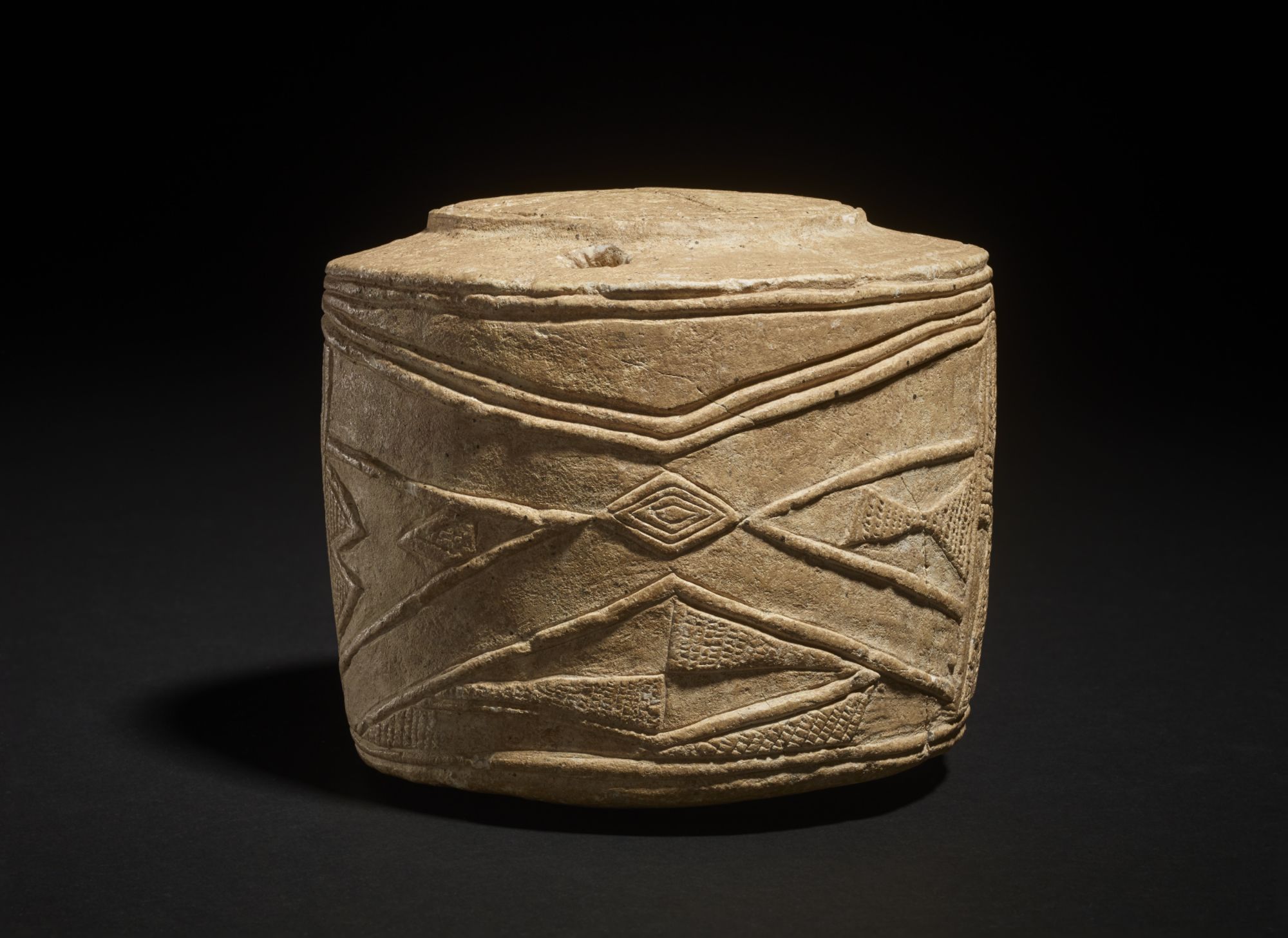A 5,000-year-old chalk drum will go on public display for the first time next week, more than six years after it was first uncovered by archaeologists in England.
The object was discovered alongside the burial of three children and has been billed “the most important piece of prehistoric art to be found in Britain in the last 100 years,” in a press release by the British Museum, who will unveil it next week as part of the “World of Stonehenge” exhibition.
First discovered by independent company Allen Archaeology during a routine excavation at the village of Burton Agnes in Yorkshire in 2015, the drum has since been the subject of significant research and conservation work. Despite its name, the object is not thought to be a musical instrument but rather a piece of sculptural art.

Project curator for the British Museum’s exhibition, Jennifer Wexler, told CNN that the find was particularly remarkable in the context of three similar drums first discovered in the village of Folkton – around 15 miles from Burton Agnes – in 1889.
“This drum is particularly intriguing, because it basically encompasses a sort of artistic language that we see throughout the British Isles at this time, and we’re talking 5,000 years ago,” Wexler told CNN.
The Burton Agnes drum has a “solar cross” on its top, and Wexler said the drum features “all these ideas that we’re seeing across the board, but in one really amazing object” – decorated with motifs resembling others seen in Scotland and Ireland.
“Because of this new discovery, we’re actually able to date the skeletons with carbon-14 dating (also known as radiocarbon dating),” Wexler told CNN. “So what we have found out is that these style drums are 500 years older than we thought, which is amazing.”
The museum said the Folkton drums were previously believed to date to 2500-2000 BC, but radiocarbon dating from the Burton Agnes children showed a date of 3005-2890 BC, around the same time as initial construction of British monument Stonehenge.

Wexler said the children’s skeletons will also undergo DNA analysis, which will be used to work out their relationship. She said they were of varying ages, with the eldest aged 10-12, while the younger ones were between six and nine years old and between three and five years old.
They were found placed in the grave with the eldest holding the two younger ones, who were holding hands, and Wexler said the drum could have served as a toy for the children, and that there could have been wood versions that did not survive over time.
The museum said the drum was found above the head of the eldest child and included three “hastily added holes, perhaps marking the presence of the three bodies in the grave.” A chalk ball and a polished bone pin were also found in the grave.
The rarity of the drum is particularly notable, with Wexler saying that even burials were rare at the time and usually reserved for children – and the museum said it was “one of the most elaborately decorated objects of this period found anywhere in Britain and Ireland.”



